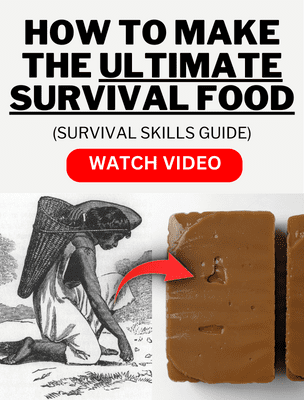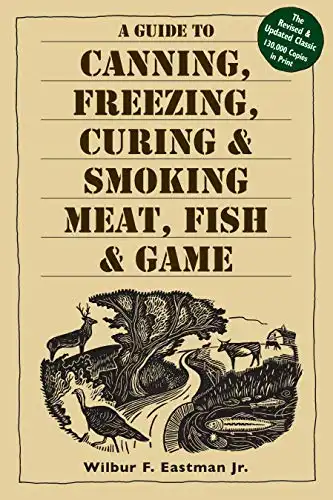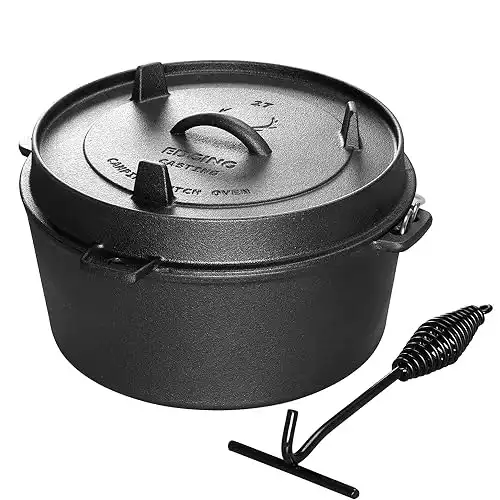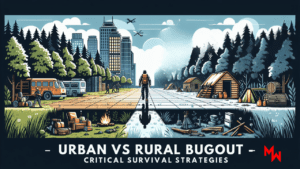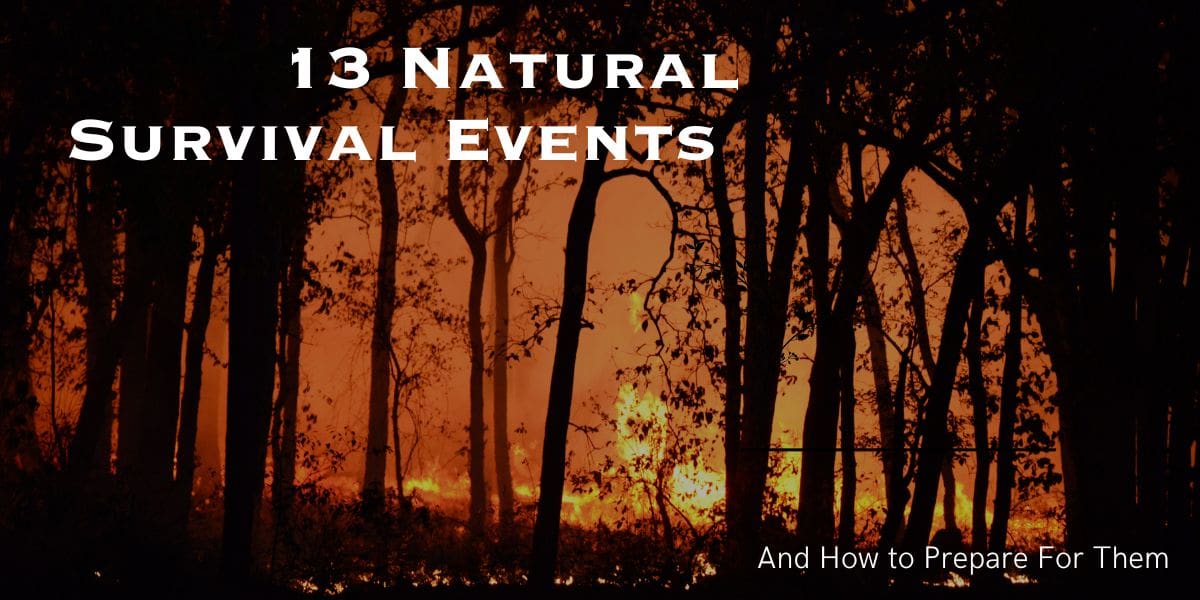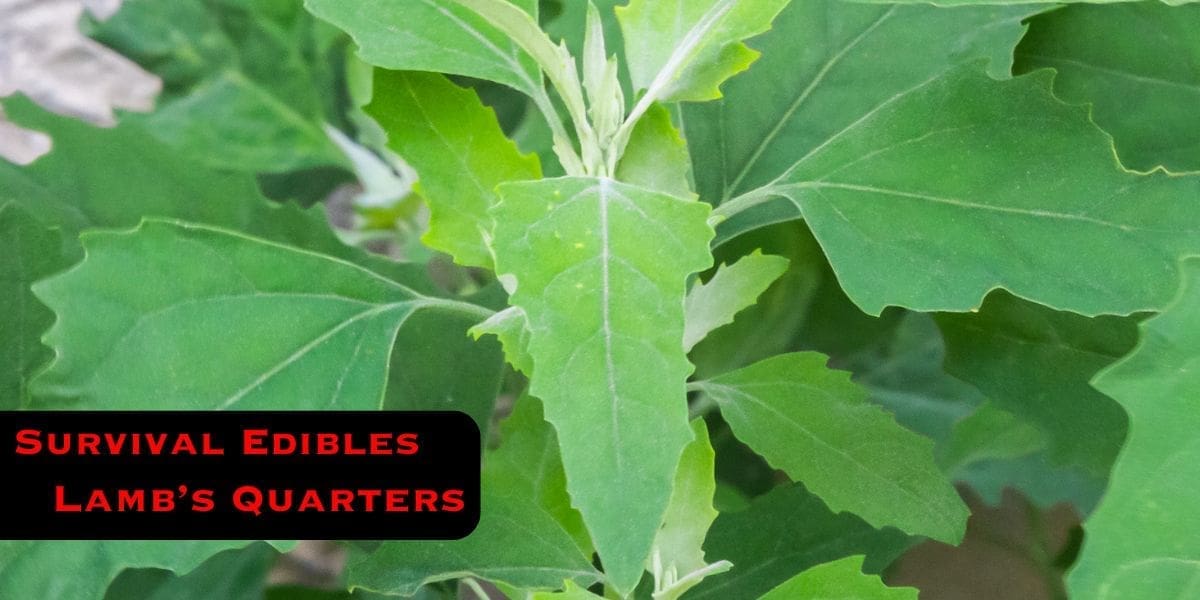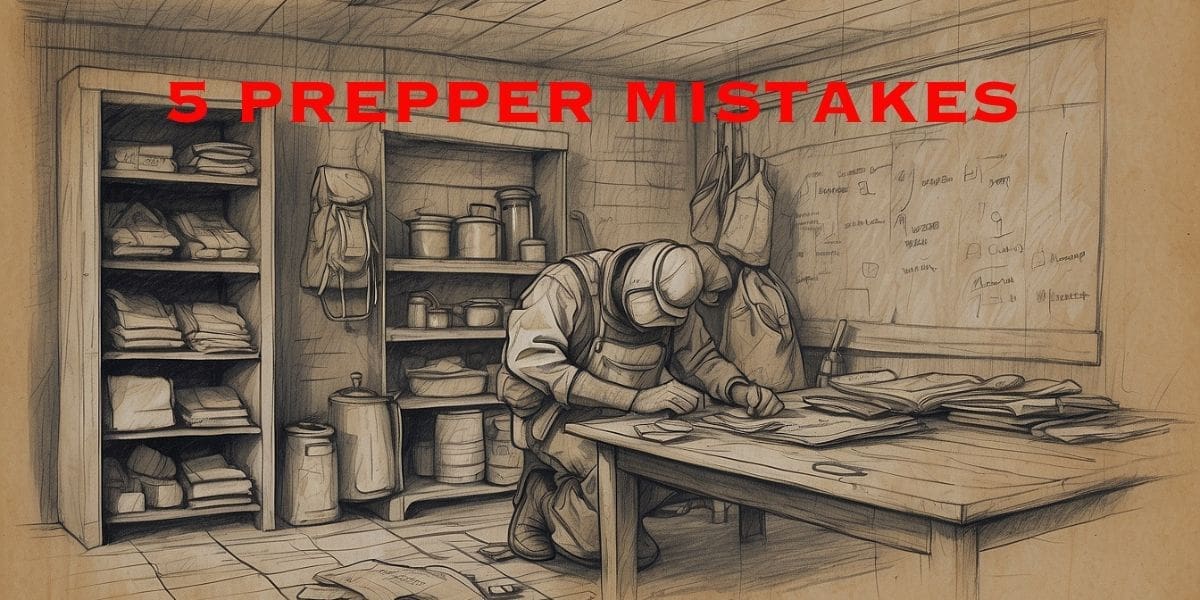Introduction to Stone Age Cooking Techniques
In the depths of history, humanity thrived using primitive methods of cooking that harken back to the Stone Age. In those times, life was devoid of the simple luxuries that we often take for granted today. Modern cooking methods, relying on appliances and cookware, have become ingrained in our daily lives, leaving many with no knowledge of how to cook without these machine-made tools.

But what if disaster were to strike? Imagine finding yourself in a survival situation, where modern appliances and tools become utterly useless, or simply unavailable. Power outages and fuel shortages are common occurrences during emergencies, rendering ovens, microwaves, and other electric cooking methods futile. Even alternative methods that don’t rely on electricity often necessitate modern or pre-made fuel, such as gas or lighter fluid, along with matches. All of which could eventually run out, or you could simply not have available when you need them.
Moreover, the weight and bulkiness of traditional cooking tools like pots and pans pose a challenge when you’re on the move with a survival bag. In such situations, agility is paramount, and the constant clinking of utensils can compromise your stealth in critical moments.
However, fear not, for Stone Age cooking methods come to the rescue. These primitive techniques solely employ natural materials found in the wilderness. Mastering the art of cooking with only what nature provides is an essential skill for all wilderness survival enthusiasts as well as preppers. These methods will ensure that you and your group remain nourished even in the harshest and most extreme conditions.
Cooking Over a Fire: Embracing Primitive Methods
When it comes to cooking with only natural materials, there are several effective ways to utilize fire. However, before delving into these methods, it is crucial to be well-versed in starting a fire in the wild. Familiarize yourself with various primitive fire-starting techniques, as it is beneficial to have multiple options in case certain materials are unavailable.
Safety should always be a priority when starting fires outdoors. Extensive research is essential to ensure you understand how to initiate fire-starting methods safely. Recklessness can lead to injuries or even the ignition of wildfires, so exercise caution and responsible fire management. We encourage you to study the subject and become proficient with the skill now so you’re not learning as you go in a crisis.
One direct fire cooking method is roasting, a technique often associated with whole pigs slowly rotating over a fire. To employ this method, construct two triangles using pieces of wood that intersect at the top and secure them with cordage. Create a divot within this structure to hold a long stick, which will support the ingredients. Throughout the cooking process, rotate the stick to evenly distribute the heat.
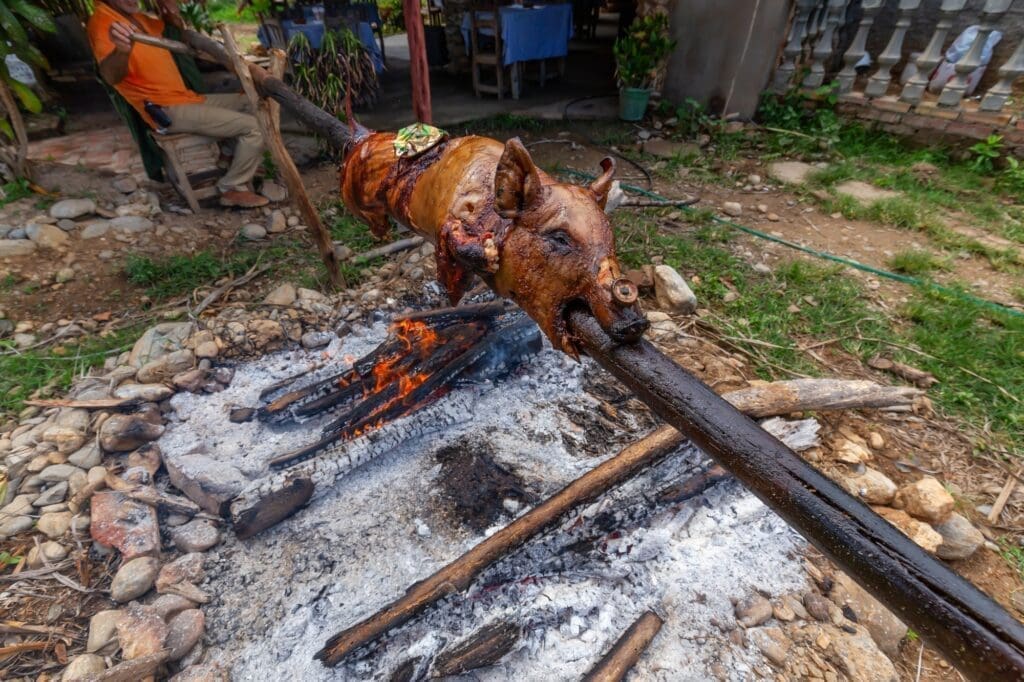

Grilling on hot stones is another straightforward method that requires minimal building skills. Start by building a fire and surrounding it with smaller rocks. Place a large, flat rock on top of the smaller rocks, creating a gap between the flame and the cooking surface. Alternatively, you can position the rock beside the fire. Once the stone reaches the desired temperature, cook your food on it, similar to a modern stove or grill.
When it comes to handling and flipping food, natural materials can serve as useful tools. For instance, you may discover a stick with prongs that can act as a spatula, or use two twigs as makeshift chopsticks to turn and grab your food.
However, it is crucial to be mindful of the type of rock you choose for cooking. While most rocks are suitable, certain types can combust when exposed to direct heat. Familiarize yourself with the rock types in your area and their resistance to heat, ensuring you avoid any that may pose a risk. Ensure you don’t use porous rocks on the fire as they may contain moisture which in turn could cause the rock to explode.
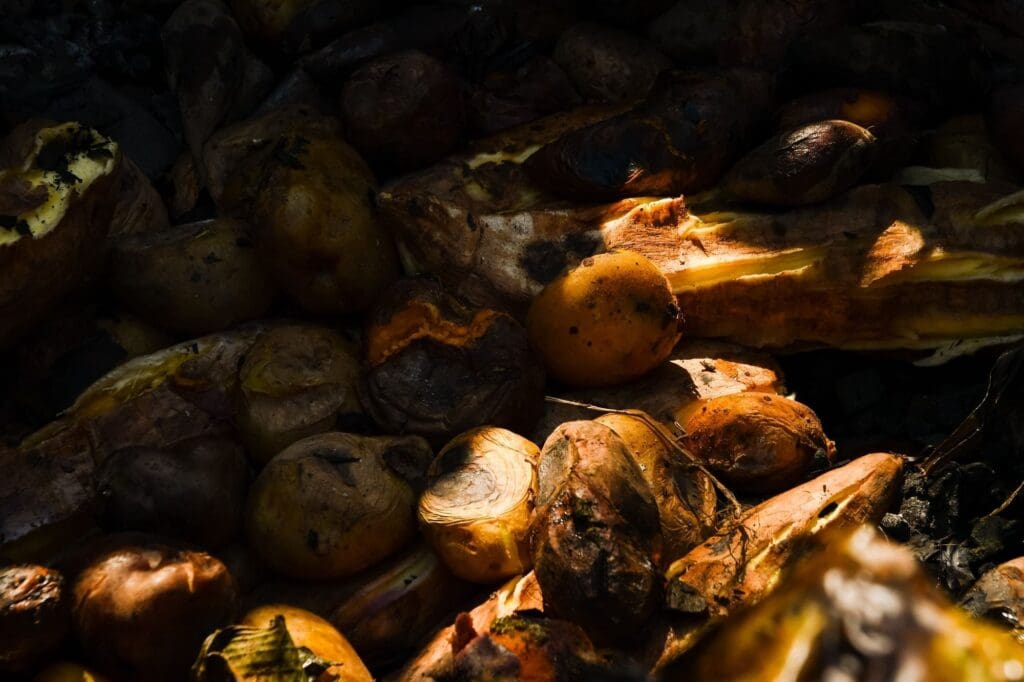

Pit cooking is another primitive method that involves digging a hole in the ground, starting a fire within it, and placing a cooking surface over the flames. Some individuals prefer to add rocks to the fire and cook directly on them, while others opt to roast their food using the heat generated by the pit. This method can be particularly advantageous in windy conditions, as the hole helps contain the fire and prevent accidental ignition or burning.
By embracing these primitive cooking methods, you can tap into the wisdom of our ancestors and become adept at preparing meals with only natural resources. Mastering these skills will prove invaluable in survival situations and allow you to nourish yourself and your group, even in the most challenging circumstances.


Cooking with Indirect Heat: Unleashing Nature’s Steam and Earth Ovens
In the realm of primitive cooking, the possibilities extend beyond direct fire methods. Indirect heat techniques, such as steaming food in leaves or animal skin, offer unique alternatives to traditional pots and pans. These natural materials serve as vessels for holding and cooking food, allowing for a diverse range of heat sources to be utilized.
When cooking with indirect heat, wrapping food in leaves or animal skin provides a protective layer that helps retain moisture and infuse flavors. This method proves particularly useful when cooking on hot stones, in pit cookers, or even in earth ovens.
Earth ovens, a remarkable creation of our ancestors, are manmade structures crafted from materials like stone or clay. Typically designed in a dome shape to trap heat, these ovens can be constructed either partially or entirely above ground or even over pits.
In the case of earth ovens, there are two common approaches to utilizing indirect heat. Some individuals choose to build the fire directly on the same layer as the oven’s dome, allowing the wrapped food to be inserted into the hot coals. Others prefer a separate pit for the fire, placing stones or bricks over the flames to create a cooking surface.
EDGING CASTING : Outdoor Camping Dutch Oven Pot with Lid Tripod, 6QT
Steaming food in leaves or animal skin, along with the use of earth ovens, presents a wealth of possibilities for culinary exploration in a primitive setting. The natural materials not only impart unique flavors but also provide a healthy and efficient method of cooking. As steam envelops the food, it gently cooks, preserving nutrients and enhancing taste.
When selecting leaves or animal skin for steaming, consider their availability and suitability for culinary purposes. Experiment with various options, such as banana leaves, corn husks, or even animal bladders, to discover the flavors and textures they impart to your meals.
To steam food using leaves or animal skin, start by wrapping the ingredients securely, ensuring a tight seal to prevent steam from escaping. Place the wrapped food over a heat source, such as hot stones or within the earth oven. Allow the steam to work its magic, cooking the food to perfection.
Exploring the art of indirect heat cooking not only expands your survival culinary repertoire but also deepens your connection to ancestral cooking methods. By embracing these techniques, you unlock the potential of nature’s steam and the ancient wisdom of earth ovens, creating meals that are both nourishing and rich in flavor, and most importantly accessible during a grid down scenario.


Food Preservation Methods: Harnessing the Power of Dehydration and Smoking
In the realm of primitive food preservation, two methods stand out for their simplicity and effectiveness: dehydration and smoking. These techniques not only extend the shelf life of food but also enhance its flavor and versatility. Let’s explore these methods in detail, keeping in mind their relevance in survival situations.
Dehydration is a time-tested method that involves removing moisture from food, inhibiting the growth of mold and bacteria. By eliminating water content, you create a lightweight and compact form of sustenance that can last for months, or even up to a year.
One straightforward way to dehydrate food is by harnessing the power of the sun. This method is both efficient and expedient. By thinly slicing your food, approximately ¼ inch thick or less, and scoring both sides, you increase the surface area for moisture to evaporate. Construct a rack or use cordage to suspend the food, ensuring it is placed in direct sunlight and in a breezy location. The elevated position should keep it out of reach of animals. Within several days, the food will transform into a jerky-like consistency, indicating its readiness for long-term storage.


If sunlight is not readily available, air drying can be an effective alternative. This method requires no external heat source and can be performed indoors. However, it is important to note that air drying works best in dry climates, as high humidity can impede the drying process. Similar to sun drying, thinly slice and score the food, then place it in a well-ventilated area. With patience, the moisture will gradually evaporate, resulting in dehydrated food that can be stored for extended periods.
Dehydrated foods can be enjoyed as is, providing a lightweight and nutrient-dense snack. Alternatively, you can rehydrate the food by adding clean water and cooking it over a heat source. This process restores the food to its original state, making it more palatable and versatile for various culinary applications.
Another method of food preservation is smoking, a technique cherished for its ability to impart a delightful smoky flavor while simultaneously drying out the food. Smoking is particularly beneficial for preserving game meat that you have hunted. By constructing a smoking rack over hot coals, you expose the meat to indirect heat and smoke. The smoke helps eliminate bacteria, while the heat aids in the drying process. It is crucial to ensure the meat is dry before smoking completion, as moisture can accelerate spoilage. Aim for a texture similar to jerky, which optimizes the preservation potential.
The preservation benefits of smoking are similar to those of sun drying, as both methods effectively remove moisture and extend the shelf life of food. Smoked foods, when properly stored, can last several days longer than cooked meat, making them ideal for survival situations.
By harnessing the power of dehydration and smoking, you tap into the wisdom of our ancestors and unlock the potential to preserve and enjoy food in its most natural form. These methods not only offer practical solutions for survival scenarios but also provide an opportunity to savor the rich flavors and textures that come with these time-honored techniques.


Conclussion on Stone Age Cooking Methods
In the realm of survival emergencies, mastering these Stone Age cooking methods becomes a necessity. To truly grasp their essence and ensure your preparedness, it is crucial to practice these techniques at home.
When practicing, it is important to embrace the authenticity of the methods by avoiding the use of modern tools. The purpose of these techniques lies in their simplicity and reliance on primitive resources. By immersing yourself in the process, you will develop a deeper understanding of their intricacies.
Safety should always be a top priority when engaging in primitive cooking. As you will be working with fires and hot surfaces, exercise caution and take necessary precautions. Ensure a safe environment and handle the materials with care to prevent accidents.
Maintaining cleanliness in both the materials and food is of utmost importance in primitive cooking. Thoroughly clean and disinfect your utensils and cooking surfaces using clean, hot water. If possible, boiling the materials can provide an extra layer of safety. Additionally, exercise caution when selecting the meat and produce you use, avoiding anything that appears spoiled or has an off odor.
By immersing yourself in the practice of these Stone Age cooking methods, you not only enhance your survival skills but also gain a deeper connection to our ancestral roots. Embrace the simplicity, resourcefulness, and authenticity of these techniques, and let them guide you on a journey of self-sufficiency, survival skills, and culinary exploration.








